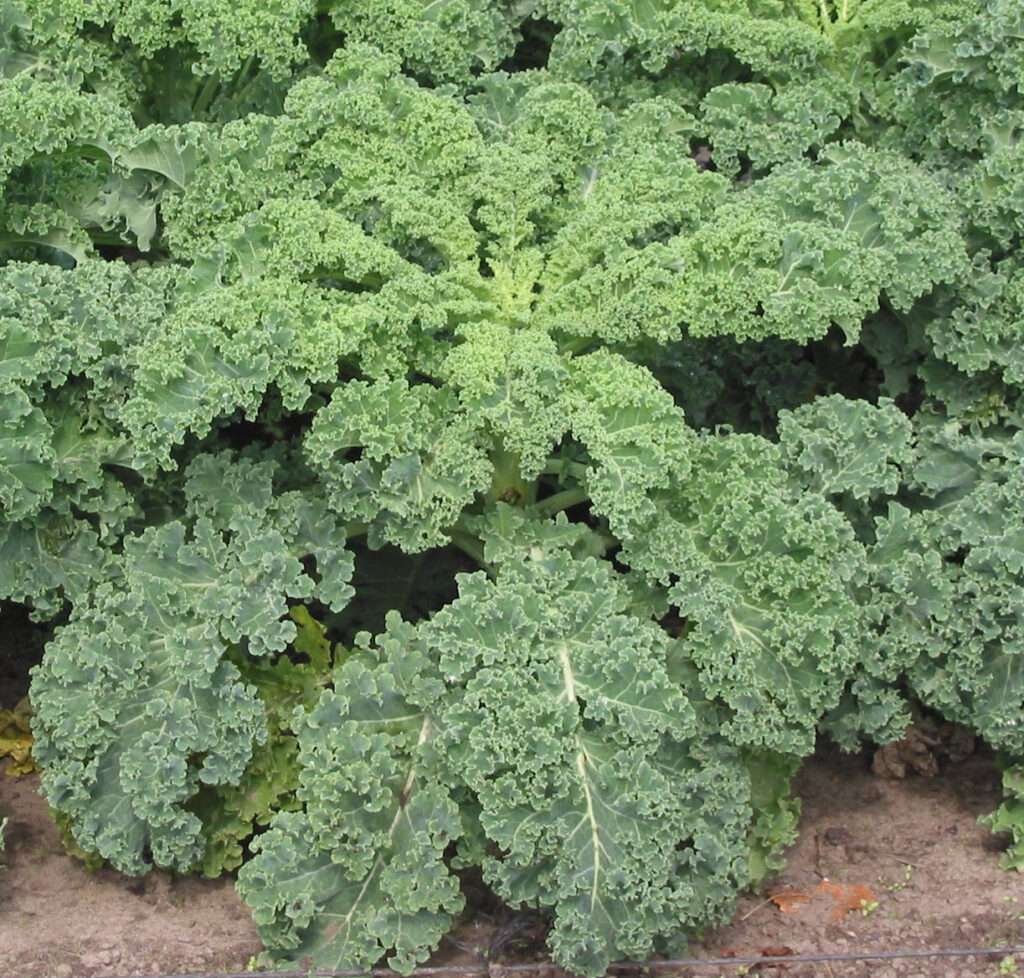
Description
A common cultivar used as a vegetable is Brassica oleracea, a type of plant in the Brassicaceae family. Tall biennial oleracea develops a robust rosette of big leaves in its first year of growth. Compared to other Brassica species, its leaves have more meat and thickness, which is an adaptation that helps it retain water and nutrients in its challenging growing habitat. The leaves are smooth, spherical, closely spaced, and have a small notch on the edges. They can be consumed either raw or cooked.
Habitat
This species is native to the Atlantic shores of Spain, France, and Great Britain. It is a subshrub or biennial that grows mostly in the temperate biome.
Uses
Another use for kale is as a medication. As an oral antioxidant, kale is used to treat a variety of conditions including heart disease, colitis, constipation, diabetes, Crohn’s disease, hangovers, hot flashes, high cholesterol, vision loss, bladder cancer, and wound healing.

Varieties
Here are some varieties to consider:
Consider some of the following varieties:
“Hanover Salad” develops quickly and yields early. It tastes good when eaten raw in salads.
“Lacinato” is a Tuscan heirloom kale with a puckered shape. Sometimes it’s called dinosaur kale or Tuscan kale. Even after a snowfall, its thick leaves can be collected due to their resilience.
The magenta leaves of ‘Redbor’ have rounded margins. Its flavor and texture are crisp and mild.
The velvety, smooth leaves of ‘Red Russian’ have purple veins and margins. It’s regarded as one of the sweetest kale types.
“Vates” is a small, bluish-green, curly kale that can withstand both heat and cold. The source of it is ‘Dwarf Blue Curled Scotch’ kale.
Plant Care
- Light
In most areas, kale requires full sun to partial shade since it grows most fully when it receives six hours or more of direct sunshine every day. On the other hand, give your plant some shade if you reside in a hot, dry region, especially from the intense afternoon sun. The leaves may wilt and lose flavor in the heat.
- Soil
Rich soil with a high organic matter content and a slightly acidic pH (6.5 to 6.8) is ideal for kale plant growth. For healthy leaf growth, organic matter’s high nitrogen content is essential. Also, the soil needs to drain properly.
- Water
To be healthy, kale requires a constant supply of water; it grows best in 1 to 1 1/2 inches of water each week on average. Give your kale plants regular irrigation to maintain an even but slightly damp soil. Wet soil, in conjunction with cool weather, keeps kale leaves crisp and sweet instead than bitter and harsh. Mulching the area surrounding your plants will assist the soil stay moist and cool.
- Temperature and Humidity
Once mature, the plant can withstand some frost and is typically thought of as a vegetable for cool weather. When planting kale, the ideal soil temperature is between 60 and 65 degrees. Each variety likes cool weather, and a little frost will make them sweeter. Kale becomes bitter in hot heat. Though it needs two growing seasons (or years) to complete its life cycle, kale is typically planted as an annual plant. If it is exposed to severe frosts or snow, it will collapse. However, if the winters in USDA zones 7 through 9 are warm and there is enough water, it can be cultivated all winter long.
- Fertilizer
Fertilizer should be mixed into the top 3 to 4 inches of soil before planting. Following the directions on the fertilizer label, continue feeding your kale during the growing season. Apply a high-nitrogen vegetable fertilizer or compost.
Table





